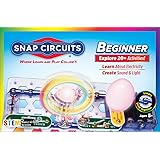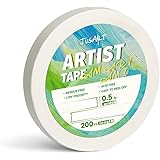Mastering Homemade Brunch Focaccia: Your Guide to a Perfect Weekend Treat
Watching the beautiful process unfold in the video above, you might be thinking, “That looks incredible, but how do I achieve that perfect golden crust and airy interior at home?” Crafting an authentic homemade brunch focaccia can seem like a daunting task, yet it doesn’t have to be. Imagine if you could consistently bake a focaccia that rivals your favorite bakery, fragrant with olive oil and bursting with fresh flavors, transforming your weekend brunch into an extraordinary event.
The solution lies in understanding a few key techniques and embracing the versatility of this beloved Italian bread. This comprehensive guide will walk you through the essential steps, from mastering the dough to choosing the perfect brunch-inspired toppings. We will help you unlock the secrets to a wonderfully light and chewy texture, ensuring every slice of your homemade focaccia is a testament to your culinary prowess.
1. The Foundation: Crafting the Perfect Focaccia Dough
A truly exceptional brunch focaccia begins with a well-made dough. This isn’t just any bread dough; it’s a specific balance of hydration and proofing that gives focaccia its signature texture. You need high-quality ingredients to lay the groundwork for success. Always opt for good quality all-purpose or bread flour, active dry yeast, and, crucially, extra virgin olive oil that you love the taste of.
Start by activating your yeast in warm water with a pinch of sugar; this step ensures your yeast is alive and ready to work its magic. Combine this mixture with your flour and salt, then mix until a shaggy dough forms. The dough will be quite sticky initially, much stickier than a typical bread dough, so resist the urge to add too much extra flour. This high hydration is essential for focaccia’s characteristic open crumb.
Kneading focaccia dough often involves a stretch-and-fold method rather than traditional heavy kneading. Perform several sets of these folds over a period of an hour or two, allowing the dough to rest in between. Imagine if you could develop the gluten structure without breaking a sweat; the stretch-and-fold technique achieves exactly that, building strength and elasticity while keeping the dough light and airy. This patient process makes all the difference in achieving that desired chewy yet tender texture.
2. The Art of Proofing: Patience is Your Best Ingredient
Proper proofing is perhaps the most critical stage in achieving a light and airy homemade focaccia. After mixing and initial folding, your dough needs time to rise, ideally in a warm, draft-free place. This first proof allows the yeast to feast on the sugars, producing carbon dioxide that creates those wonderful air pockets. You’ll want the dough to at least double in size, which can take anywhere from 1 to 2 hours depending on the ambient temperature.
After the initial rise, transfer the dough to a well-oiled baking pan and gently stretch it to fill the pan, or close to it. This is not the time for aggressive handling; treat the dough with care to preserve all those precious air bubbles. Now, cover the dough again for its second proof. This second rise, often called the final proof, is where the focaccia truly gains its volume and character.
Imagine if your focaccia could develop an even deeper flavor profile; allowing it to cold-proof in the refrigerator overnight can achieve just that. This slow fermentation enhances the complexity of the bread, yielding a more nuanced taste and an even better texture. Simply remove it from the fridge an hour or two before baking to allow it to come to room temperature and complete its final rise.
3. Mastering the Dimple: Why it Matters for Your Brunch Focaccia
One of the most recognizable features of focaccia is its distinctive dimpled surface. This isn’t merely for aesthetics; it serves a crucial purpose in the baking process. Once your focaccia dough has completed its final proof in the pan, generously drizzle it with more high-quality extra virgin olive oil. This is where the dimpling comes in.
Using your fingertips, gently but firmly press depressions all over the surface of the dough. These dimples prevent large air pockets from forming during baking, ensuring a more even crumb structure. They also create perfect little wells to hold the olive oil and any toppings you choose, infusing every bite with flavor. Imagine if each indentation became a tiny reservoir for deliciousness; that’s the magic of the dimple.
Be confident in your dimpling, but remember to be gentle enough not to deflate the dough completely. You want to press down almost to the bottom of the pan but avoid tearing the dough. This technique contributes significantly to the unique texture of homemade focaccia, ensuring a delightful balance of crisp crust and soft interior.
4. Brunch-Inspired Toppings: Elevating Your Homemade Focaccia
The beauty of brunch focaccia lies in its incredible versatility when it comes to toppings. While traditional focaccia often features just rosemary and sea salt, a brunch version invites more creative and savory additions. Consider what flavors pair well with a morning or early afternoon meal.
Here are some inspiring ideas to transform your focaccia into a brunch centerpiece:
- Tomato and Herbs: Thinly sliced cherry or grape tomatoes, fresh basil, oregano, and a sprinkle of flaky sea salt.
- Caramelized Onion and Goat Cheese: Sweet and savory caramelized onions spread over the dough, topped with crumbled goat cheese after baking or in the last 10 minutes of baking.
- Roasted Red Pepper and Feta: Strips of roasted red bell pepper, crumbled feta cheese, and a pinch of chili flakes for a subtle kick.
- Sausage and Sage: Cooked and crumbled breakfast sausage (or a vegetarian alternative), fresh sage leaves, and a touch of grated Parmesan.
- Asparagus and Lemon Zest: Blanched asparagus spears laid across the top, brightened with fresh lemon zest and a sprinkle of black pepper.
- Potato and Rosemary: Ultra-thinly sliced potatoes (par-boiled or raw if very thin), fresh rosemary sprigs, and plenty of sea salt.
Feel free to mix and match these ideas or use them as a springboard for your own culinary imagination. Remember to press your chosen toppings gently into the dimples before baking, ensuring they adhere well and infuse the bread with their flavors.
5. Baking and Serving: The Grand Finale of Your Homemade Focaccia
Baking your homemade focaccia at the right temperature is crucial for achieving that desirable golden-brown crust and perfectly cooked interior. Preheat your oven to a high temperature, typically around 400-425°F (200-220°C). A hot oven helps the focaccia rise quickly and develop a beautiful crisp exterior while maintaining a soft, airy crumb inside.
Bake the focaccia for about 20-30 minutes, or until it’s deeply golden brown on top and the bottom sounds hollow when tapped. Keep an eye on it, as oven temperatures can vary. Imagine if your kitchen filled with the irresistible aroma of freshly baked bread; this is precisely what you’ll experience as your focaccia bakes to perfection.
Once baked, immediately transfer the focaccia from the hot pan to a wire rack to cool slightly. This prevents the bottom from becoming soggy from residual steam. Serve your warm brunch focaccia in thick squares or rectangles, perhaps alongside a fresh salad, scrambled eggs, or a simple charcuterie board. It’s perfect for dipping in olive oil, or as a base for open-faced sandwiches. This homemade focaccia is more than just bread; it’s a centerpiece for memorable brunch moments, proving that a little effort in the kitchen can yield truly spectacular results.







